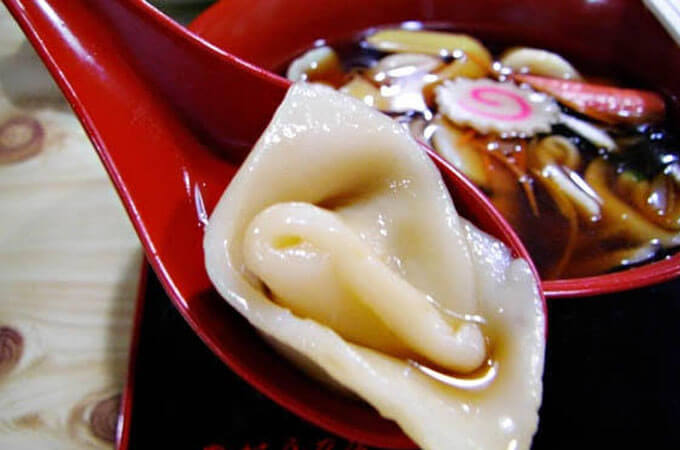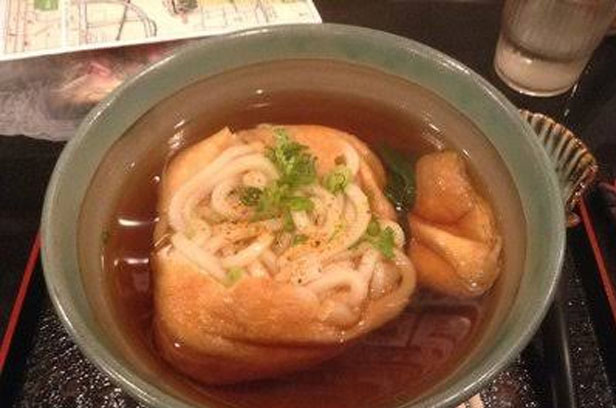Who doesn’t know udon? If you have an interest in Japanese food, you should certainly know it, or at least have heard its name once. This type of Japanese noodle is famous for its delicious chewy, soft texture, and generally every strand of the noodles looks thick. Udon is also often made in unusual unique variants.
Some areas in Japan have their own way to cultivate udon, such as noodles formed into a flat like a kwetiau, but still thick. Alternatively, there are some areas that give color to the noodles with the typical ingredients of the area.
However, there are some areas that cultivate udon until the appearance does not look like udon, not even look like noodles whose specialty characteristic is to have a sheet like long yarn. Here are some examples of these unique udon variants.
1. Mugi Kakke Udon

Mugi Kakke Udon
Mugi Kakke Udon is a traditional noodle dish from Aomori Prefecture and Iwate Prefecture. The appearance of udon noodles is not unusual because of its triangular cut. The locals initially made this dish to utilize the remnants of Soba noodles called kakera, then evolved into its own udon menu. The noodles are cooked in a hot pot with other ingredients, then dipped in garlic paste or scallion miso paste which is a specialty dish of the Tohoku region.
2. Konosu Kawahaba Udon and Himokawa Udon

Konosu Kawahaba Udon and Himokawa Udon
This Udon is inspired by the breadth of the Arakawa river that flows between the two cities in Japan’s second largest wheat-producing high, Konosu and Yoshimi in Saitama Prefecture, so the form of the souge is very wide. The word Kawahaba found in the name of this udon has the meaning of “river width”, and the word is very suitable to describe the form of noodles in the Konosu kawahaba udon.
The Himokawa Udon has an exact appearance with the Konosu Kawahaba Udon. The width of noodles originating from Kiryu City, Gunma Prefecture is varied, i.e. between 1.5 centimeters and even 10 centimeters. Although wide, actually the thickness of this noodle is only one millimetre. Apparently its unique and soft texture makes this udon one the most famous variant of Udon.
3. Mimi Udon

Mimi Udon
The Japanese word mimi means ear, depicting the shape of the noodles, which is somewhat similar to the sense of the hearing. Udon originated from Sano City, Tochigi Prefecture is usually eaten when commemorating the new year. It is said that if you eat this udon at this time, the person who eats will not hear bad things for a year.
4. Kinchaku Kitsune Udon

Kinchaku Kitsune Udon
The variants mentioned earlier can still be interpreted if entering the udon. Based on the photo above, there may be a question about why this food originating from Nara Prefecture includes udon fare as well. Take a look at the following video, and you will know what causes.
Check out the other post right here: Taiwan Progressively Advancing Muslim Visitor Inviting City
There is a udon sheet in the big aburaage! If you know and love the kitsune udon, you must be delighted to see the direct Kinchaku kitsune udon. On kitsune udon, udon soupy will be topped with the topping aburaage. However, on the Kinchaku kitsune udon, Aburaage was used as a ‘ pouch ‘ to conceal his udon.
RELATED ARTICLE:
